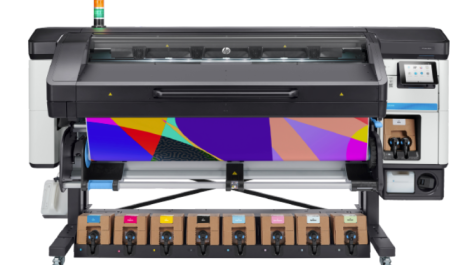Book sales have skyrocketed. Direct mail is a hit with households. As we look towards 2023, what does the future have in store for digital print? Jade Schopman asked the industry what the growth areas will be…
It seems as if we have been living through one crisis after another – a pandemic, extreme heatwaves, drought due to climate change, inflation, political instability, war, and an energy crisis. But to panic is never good advice in any decision-making. To determine the new future of this industry, it is important to step back, reflect and look at the broader picture.
Right off the bat, eProductivity Software’s vice president of product management, Nick Benkovich, said, ‘The most obvious trend in growth areas for digital print is the emergence of digital. ‘Emergence of digital’ seems like a strange prediction, but 2023 will be for many the tipping point on digital printing and digital workflow. Multiple digital press vendors are now delivering presses that many of us only ever dreamt of. ‘Print differentiation will also continue to increase as the number of finishing options available to a buyer is at an all-time high and printers will take advantage of ‘increasing print differentiation’ through value-added services and finishing options.
These digital, paperless workflows that supports an average of 40% increase in number of jobs from five years ago, connected, automated with reduced human touch points from order acquisition to delivery to reduce cost of sales, production and billing will be the keys to profitable growth in 2023 and beyond.’ Phil McMullin, sales manager at Epson, predicts, ‘There are several global, technological and market factors that are, and will continue to be, shaping the large-format print sector in 2023 and beyond. Among them is the acceleration of digital transformation that supports hybrid and remote working while also driving greater automation in systems and solutions. Technologies such as artificial intelligence, the internet of things, virtual and augmented reality and cloud computing are all impacting connectivity, responsivity and flexibility.
‘Digital transformation is helping address another market trend set to dominate 2023 – a shortage in skilled workers. Employers are under pressure to ensure they are providing fulfilling, attractive careers in a nice working environment with the flexibility of hybrid work.’
Affirming this view is Jamie Nelson, director of Compass Business Finance: ‘Following the Autumn Statement, it’s clear that the country is set for a recessionary period, costs will continue to rise and businesses will need to keep innovating. Some may find the right opportunity to exit the market, whilst others will take the opportunity to invest. Mergers and acquisitions, as well as MBOs continue to take place at the same elevated rate they have been for the past two years, without sign of ceasing. Businesses should be thinking about cashflow, ensuring debts are structured as favourably as possible; efficiency, to keep energy, material and labour costs low; and sustainability, to protect their long-term future.
‘The skills shortage also needs addressing. Attracting and training young people to our industry is vitally important, not only can they help get the work done but they also bring a fresh perspective and new ideas to our businesses, helping to drive us forward.’ The energy crunch There has been a huge amount of instability in 2022, with businesses across every industry facing economic pressures due to the increasing cost of living and energy prices. The print industry is no exception with labour shortages adding additional pressures for many PSPs. Stuart Rising, head of commercial print at Canon UK, says, ‘In order for PSPs to ride the wave of financial pressures, choosing technology which is future-proofed, energy efficient and built to last has become a key consideration. With the economic challenges we have seen in 2022 set to persist next year, it is important that PSPs go a step further to offer the expertise and customer service that will help build their reliability credentials and develop long-term relationships with their customers.’
Isabella Jelinek, marketing manager at HP, adds, ‘We used to buy everything we wanted outright. But today, you can even rent your car with a subscription service. This shift from a transactional to a subscription-based, ‘everything as a service’ economy, is being driven by millennials, who like things easy, flexible and based on their actual usage. And we’re seeing new business models emerge that put the customer at the centre of a multichannel service experience that gives them customised solutions, continuous updates and a trusted relationship with their service provider. Marc Artigas Roig, sales director at Roland DG, shares similar views. ‘Today, all those associated with the printing industry are hitting the same iceberg – a challenging economic climate – and the need for cost-saving measures as businesses look to survive inflation. In this stead, we will see an accelerated shift in focus towards low energy consumption printers as businesses look to sustain growth in 2023. At Roland DG, we see UV printing continuing to grow in popularity next year.’
Sustainability isn’t going away There is increasing pressure from government and customers for every link in the manufacturing supply chain to progress its environmental capabilities and print will play a key role in the eco transformation. Sustainability is a keyword. But what does it actually mean to be sustainable in the printing industry? Are companies who claim to be sustainable doing the work to fulfil those claims? In fact, can the print industry, which essentially uses materials and creates something, become fully sustainable soon, or in the long run? Many believe 2023 will see companies ensuring their environmental, social, and governance (ESG) processes are central to their strategy. Here are the thoughts of Kevin O’Donnell, head of marketing at Xerox UK, who says, ‘ESG and sustainability will continue to be a big play for printers as clients set higher expectation on suppliers to have clear programmes and measurements in place that manage their carbon emissions, as well as their social impact in the communities in which they operate.
‘With energy costs and costs of services also rising, we’ll likely see printers lean towards the use of technology to rebalance. With this, I’d expect to see an increase in the use of automated and integrated workflows driven by AI which will enable companies to maintain levels of service while working to reduce costs. Warren Werbitt, print consultant at The Print Whisperer, said, ‘I’ve always maintained that everything is constantly evolving in life and in our industry. So when I think about printing trends, I think about the growth of digital inkjet, colour management, automation, print embellishments, targeted direct mail using variable data, and so on. All this will make our industry better, but printers must make a concerted effort to learn the new technology. ‘As far as predictions, I don’t have a crystal ball, but I believe that print is here to stay. I see large format growing – especially wayfinding and directional signage. Digital label printing and print embellishments are also on fire.’ Predictions and trends As usual for this time of the year, our collective minds start wandering to next year and thinking about what the future will hold for our businesses and the wider industry in general.
Lews Evans, product marketing manager at Vivid Laminating Technologies, said, ‘I predict that direct mail will continue to grow. For our industry in finishings, we’re going to be moving further into the personalisation age and more into an engagement age. Printed product needs to not just hold the attention more than digital, it also needs to be interactive. So if you are receiving something printed whether it’s a scratch card foil or a link with a QR code to win a prize via direct mail, it has to be within this new engagement age. ‘In digital print I’d like to see a link to wide format print with some unique projects in direct mail and packaging. They are the two that have grown a lot this year and will continue to grow throughout 2023. I think the low profit, high quantity products don’t even need to wait till next year as it’s clear it didn’t work.’
Ms Jelinek shared HP’s thoughts, ‘Online shopping has risen dramatically in the last few years. E-commerce is now mainstream, both globally and locally. And this growth is accelerating. Right now, 21% of all global sales are online, and that number is predicted to rise to 24.5% by 2025. Our customers know that they have to get on the bandwagon before it’s too late. Being online is no longer an option, it’s a necessity.
‘In recent years, sustainability has gone from being a ‘nice to have’ to a key purchasing driver. 81% of global consumers believe that companies should help to improve the environment And 85% of people say their purchasing behaviour has become more sustainable in the last five years. So, brands are reacting to this increased demand for sustainability, as well as to investors’ sustainability concerns and new regulatory requirements.’ SOS technical support manager Omran Anwar concluded, ‘We foresee continued growth in 2023 for large format, for flexible and especially rigid media. The sign and display market continues to grow, and unlike some of the more saturated print markets, there is room for it to grow further.
‘We are seeing a trend towards diversification: the modern printer is a ‘superprinter’ who can handle several processes under one roof to reduce outwork and exploit as many market niches as they can. So many of our customers who buy flatbed machines are doing so for the first time. ‘The cost can be daunting when taking the plunge into a new market, so the emphasis is on cost effective investment. It makes sense to look beyond ‘big name, high price’ equipment, and SOS have found flatbed machines which offer high quality and performance for a relatively low price point – Gibson is positioned as a premium brand, producing a range of flatbed and hybrid LED-UV printers.’ It’s clear that while we will continue as an industry to be presented with plenty of challenges, both unpredictable and foreseen, there will also be a range of solutions and ideas to help tackle them.





